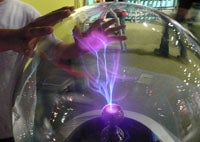Learning to Be a Teacher

Posted in GUMC Stories
 As a fourth-year Ph.D. student in the Interdisciplinary Program in Neuroscience [at Georgetown], I have turned my curiosity about how the brain works into a single-minded pursuit of the neural underpinnings of cognition. Still, I relish opportunities to expand other people’s horizons – whether it be via tutoring classmates in math, teaching high-school students on topics ranging from Henry David Thoreau to neuroanatomy, even dropping the occasional bit of trivia in conversation. And until beginning graduate school at Georgetown, it never occurred to me that a desire to learn could translate to a proclivity to teach.
As a fourth-year Ph.D. student in the Interdisciplinary Program in Neuroscience [at Georgetown], I have turned my curiosity about how the brain works into a single-minded pursuit of the neural underpinnings of cognition. Still, I relish opportunities to expand other people’s horizons – whether it be via tutoring classmates in math, teaching high-school students on topics ranging from Henry David Thoreau to neuroanatomy, even dropping the occasional bit of trivia in conversation. And until beginning graduate school at Georgetown, it never occurred to me that a desire to learn could translate to a proclivity to teach.
As an undergraduate at Massachusetts Institute of Technology, I practically lived by the adage, “Knowledge is power.” I loved attending classes; the professors’ lectures seemed to unfold like an exciting story rather than a mish-mash of odd facts. Sometimes the professors, themselves, seemed like characters out of a novel.
In Introductory Physics II, Professor Walter Lewin frequently appeared at the front of the class sporting a signature fried-egg lapel pin. Lewin was known for his delightfully eccentric lecture style. To demonstrate characteristics of electric fields, he used a Van der Graaf generator, a large device that creates static electricity, to illustrate the laws of physics. On another day, the professor enclosed himself in a Faraday cage — a sphere made of metal that blocks out electric fields – in which he rolled up to the generator. Frankly, I was in awe of the professor’s didactic antics, and I wasn’t the only one: Lewin’s lectures quickly became a favorite of undergraduates. He has since been profiled in the The New York Times, and his lectures have also appeared online. At the time, I understood that, like many things, good teaching is partly natural talent (such as Lewin’s knack for the wacky) but partly hard work and dedication — and so the lectures by my college professors got me thinking: How does one make that transformation from student to teacher?
Recently, I had a chance to gain insight into this question firsthand. Each year, graduate students in the department of neuroscience apply to serve as co-directors of the Georgetown course ICOS-325: “Drugs, the Brain, and Behavior.” In a semester, the entirely graduate student-run course provides a whirlwind tour of brain function from several vantage points, integrating knowledge about molecular, cellular, behavioral, and cognitive mechanisms to give a broad overview of the brain. I had the privilege of co-directing the course this past fall, which gave me the opportunity to find out more about what it means to teach at the college level.
As it turned out, my transition from student to teacher was a smooth one. I have always loved public speaking, perhaps due to my participation in high school and college debate teams. Being able to communicate scientific knowledge was extremely gratifying. In addition, simply knowing that I had once been among my target audience of undergraduates was of great help in preparing and presenting lectures. I tailored a lecture on Anxiety Disorders to the kinds of interesting things that I would have liked to learn as a college student, and was delighted to find that the students shared in my curiosity, listening attentively and asking questions.
Overall, my first college-level teaching experience, which is an opportunity unique to my program, has been invaluable. Teaching is a skill that can only be honed with experience; and who knows, perhaps one day the professor at the front of the class will be me, telling epic tales of neuroscience. Though, I might leave the lapel pin at home.
By Sheeva Azma
Photo by Nessman
